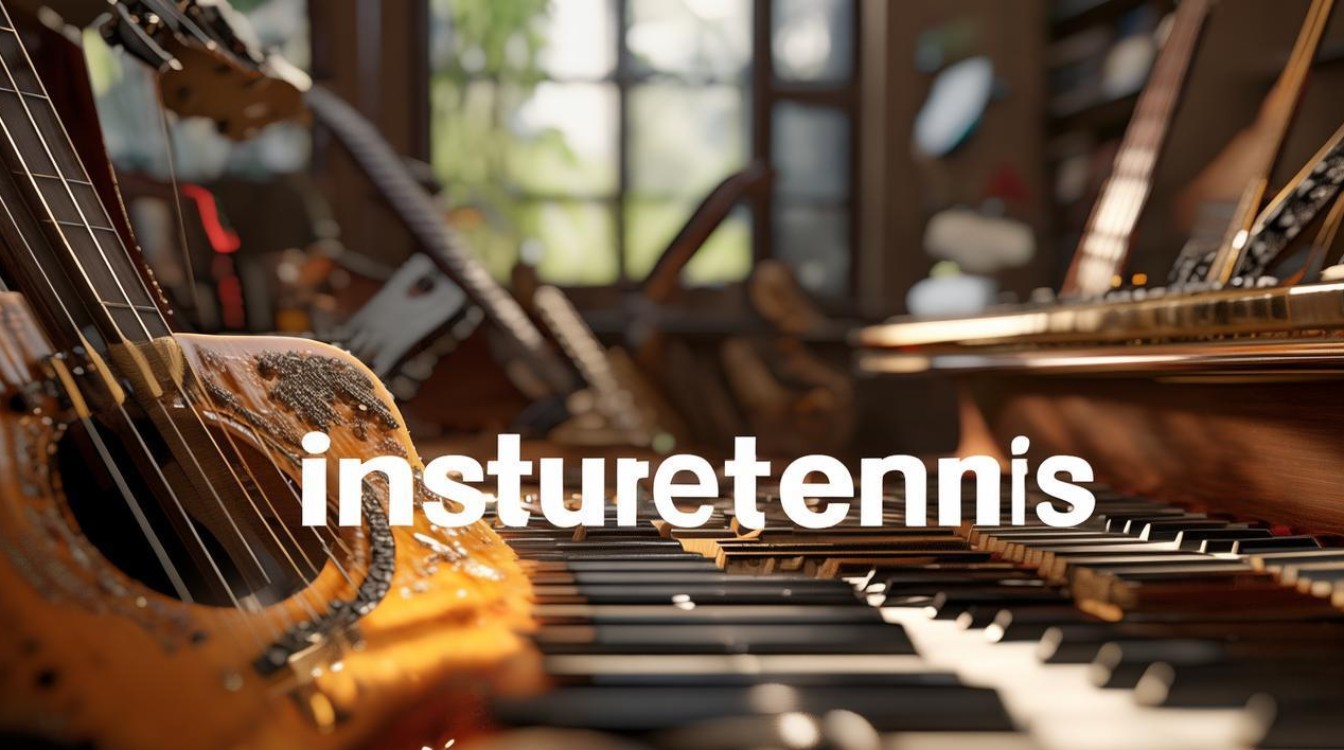在雅思口语考试中,乐器类话题(Instruments)是高频考点之一,不仅考查考生对相关词汇的掌握,更关注其描述能力、个人经历表达及文化认知深度,无论是谈论自己学习的乐器、喜欢的音乐类型,还是分析音乐对个人或社会的影响,都需要清晰的逻辑、丰富的细节和地道的表达,以下从核心词汇、话题展开技巧、文化延伸及备考建议四个维度,系统梳理雅思口语乐器类话题的备考要点。

核心词汇与表达:精准描述乐器与音乐体验
掌握与乐器相关的词汇是回答的基础,需从“乐器分类”“演奏动作”“音乐感受”三个维度积累。
乐器分类与特性
按演奏方式可分为:弦乐器(string instruments,如吉他guitar、小提琴violin、钢琴piano)、管乐器(wind instruments,如长笛flute、萨克斯管saxophone)、打击乐器(percussion instruments,如架子鼓drums、木琴xylophone),描述时可加入材质(wooden wooden strings, brass brass tubes)或音色(mellow温柔的, bright明亮的, deep深沉的)。“I play the guzheng, a traditional Chinese plucked string instrument with a mellow, resonant sound.”
演奏相关动作
动词:play演奏(play the piano)、strum弹拨(strum a guitar)、blow吹奏(blow a trumpet)、strike敲击(strike a drum)、tune调音(tune the instrument)。
名词:练习(practice, rehearsal)、技巧(technique, skill)、乐谱(sheet music, score)、节奏(rhythm, tempo)。
音乐感受与评价
形容词:melodious悦耳的、rhythmic有节奏的、soothing舒缓的、energetic充满活力的、captivating迷人的。
副词:passionately热情地、gracefully优雅地、skillfully熟练地。“She played the violin so gracefully that the audience was completely captivated.”
话题展开技巧:从“个人经历”到“深度分析”
雅思口语乐器类话题常以“Part 1: Do you play any musical instruments?”“Part 2: Describe a musical instrument you want to learn”“Part 3: Why do people learn musical instruments?”等形式出现,需通过“细节+故事+观点”的结构展开,避免简单回答“yes/no”。
Part 1:简短回答,突出个性
以“Do you like listening to music?”为例,可结合乐器偏好回答:“Yes, I’m a big fan of classical music, especially pieces played by the cello. Its deep, soothing tone helps me relax after a busy day.” 既回应问题,又自然引入乐器相关词汇。
Part 2:描述类话题,构建“故事线”
Describe a musical instrument you want to learn.
- 引入:明确乐器(如ukulele),说明原因(小巧便携、音色欢快,适合弹唱)。
- 细节:描述外观(small, four strings, wooden body)、学习动机(喜欢夏威夷音乐,想弹《Somewhere Over the Rainbow》)。
- 故事:提及第一次见到的场景(在音乐节看到街头艺人演奏,观众随节奏摇摆的场景令人印象深刻)。
- 展望:计划学习方式(报线上课程,每天练习30分钟),期待能和朋友一起弹唱。
Part 3:抽象问题,多角度论证
以“Why do parents encourage children to learn musical instruments?”为例,可从以下角度展开:
- 能力培养:锻炼耐心(repeated practice teaches perseverance)、提升协调性(hand-eye coordination)。
- 社交价值:加入乐团(orchestra)学会团队合作,通过音乐比赛(music competitions)结识朋友。
- 文化传承:学习传统乐器(如古筝、二胡)了解民族文化,增强文化认同感。
文化延伸:乐器背后的历史与社会意义
在Part 3中,考官常要求探讨音乐与社会、文化的关系,提前积累相关案例可提升回答深度。
传统乐器的文化象征
- 中国古筝:代表古典优雅,常与“高山流水”典故关联,象征知音文化。
- 印度西塔琴(Sitar):北印度古典音乐核心,音域宽广,即兴演奏(improvisation)是其特色。
- 苏格兰风笛(Bagpipes):传统节日或军队仪式中演奏,象征民族坚韧精神。
现代乐器的流行文化影响
- 电吉他(Electric guitar):摇滚乐(rock music)标志性乐器,代表反叛与自由精神(如The Beatles的《While My Guitar Gently Weeps》)。
- 电子琴(Keyboard):现代流行音乐制作中广泛使用,通过数字技术模拟多种音色,降低音乐创作门槛。
以下为部分乐器与文化关联的总结表:
| 乐器 | 国家/地区 | 文化象征 | 代表作品 |
|---|---|---|---|
| 古筝 | 中国 | 古典优雅、知音文化 | 《高山流水》 |
| 西塔琴 | 印度 | 北印度古典即兴艺术 | Ravi Shankar的表演 |
| 风笛 | 苏格兰 | 民族坚韧、仪式感 | 《Amazing Grace》 |
| 电吉他 | 美国 | 摇滚精神、反叛文化 | 《Bohemian Rhapsody》 |
备考建议:提升表达的自然度与逻辑性
模拟练习,强化逻辑连接
使用“First of all... Besides... Most importantly...”等连接词串联观点,避免回答碎片化,回答“Why do people learn musical instruments?”时:“First of all, it’s a way to relieve stress; besides, mastering an instrument boosts self-confidence; most importantly, it connects people across cultures through music.”
积累地道表达,避免“中式英语”
- 代替“like”:替换为“be fond of”“have a passion for”“be into”。
- 代替“very”:使用“extremely”“incredibly”“terribly”等程度副词。
- 口语化表达:“I’m dying to learn the drums”(我超想学架子鼓),“It really hits the spot”(这正合我意)。
结合个人经历,增强真实性
分享与乐器相关的真实故事,如“我第一次参加学校演出时紧张到忘谱,但观众的掌声让我重拾信心”,通过细节(如“sweaty hands”“forgot the first line”)让回答更生动。
FAQs
Q1: 雅思口语中遇到不会说的乐器名称怎么办?
A1: 若遇到不熟悉的乐器,可用“a traditional stringed instrument with a long neck”等描述性语言代替,避免直接沉默,若不知“西塔琴”,可说:“It’s a traditional Indian string instrument with a gourd body, often used in classical music.” 考官更关注描述能力而非词汇记忆。
Q2: 如何在Part 2中避免回答过于模板化?
A2: 加入具体细节和个人感受,避免使用“万能模板”,描述想学的乐器时,不说“它很漂亮”,而是说“I love its warm, woody color and the way it feels in my hands—smooth and well-worn, like it has its own story.” 通过感官描写(视觉、触觉)让回答更具个性化。











